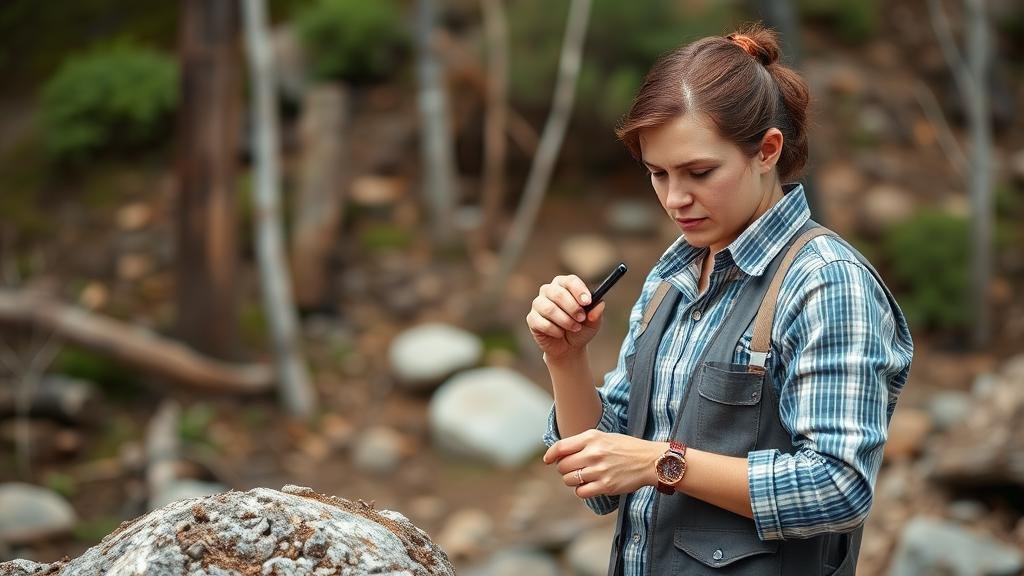How to Train Yourself to Become a Skilled Dowser for Prospecting
How to Train Yourself to Become a Skilled Dowser for Prospecting
Dowser prospecting, often referred to as dowsing or water witching, is an ancient practice traditionally used to locate water, minerals, and other subterranean resources. Although many view it through a skeptical lens, proponents assert that with proper training, anyone can develop dowsing skills. This article will provide a comprehensive guide to training yourself to become a skilled dowser, enhanced with practical methods, examples, and actionable tips.
The Science Behind Dowsing
Before delving into the training techniques, it is essential to understand the foundational principles and theories of dowsing. Dowsing is based on the idea of using tools, such as dowsing rods or pendulums, to tap into the earths energies or subconscious mind.
While scientific investigations have provided mixed results, dowsing advocates argue that it utilizes an intuitive form of perception. Anecdotal evidence highlights numerous success stories, such as the case of William G. W. Turner, who successfully located large water sources for agricultural purposes in drought-stricken areas of Australia.
Essential Tools for Dowsing
One does not need an extensive arsenal to begin dowsing. But, certain tools can enhance the experience and effectiveness:
- Dowsing Rods: Typically Y-shaped or L-shaped, these rods are made of materials such as copper or wood.
- Pendulums: These weighted objects hang from a chain or string and can provide directional movement during the process.
- Map Dowsing Tools: Some practitioners use maps to locate resources by calibrating their energy fields with the maps energy.
Developing Your Dowsing Skills
Training oneself in dowsing involves a practice-oriented approach. Here are key steps to develop your skills:
1. Establish a Connection
Before beginning, find a quiet space where you feel relaxed and undisturbed. It is essential to establish a connection to your surroundings. This connection can be fostered through meditation. Spend a few minutes focusing on your breath and visualizing energy flowing through the environment.
2. Practice with Intent
Start practicing with a clear intention. Focus on what you want to locate–water, specific minerals, or even an area of high energy. Hold your dowsing tool firmly but relaxed, and allow your instincts to guide the movements.
3. Calibration Exercises
Conduct exercises to calibrate your sensitivity to the tool. For example, choose a known source, such as a faucet, to practice locating the water. After successfully confirming your ability, transition to unknown locations for testing purposes.
4. Documentation and Calibration
As you practice, keep a journal of your experiences. Note the location, the results, any observed patterns, and your emotional response during the session. Over time, this documentation will reveal your learning curve and provide insights into your dowsing progress.
Real-World Applications of Dowsing
Dowsing is not confined to traditional contexts but has various practical applications, including:
- Water Exploration: Many farmers in arid regions rely on dowsing to find water sources beneath the ground, demonstrating its utility in agriculture.
- Mineral Exploration: Some geologists incorporate dowsing as an alternative method to locate mineral deposits, even though this practice remains controversial.
- Environmental Assessments: Dowsers can assist in identifying areas of environmental concern by detecting underground water flow patterns.
Addressing Skepticism and Ethical Considerations
While many practitioners advocate for dowsings efficacy, its essential to address skepticism. Critics often highlight the lack of scientific validation for dowsing methods. It is prudent to approach the practice with an open yet critical mindset.
Ethics plays a significant role in dowsing practice. Always ensure that your activities are conducted respectfully and legally. Obtaining permission for exploration and maintaining environmental integrity is crucial.
Conclusion
Training to become a skilled dowser requires patience, practice, and an open mind. By following the steps outlined in this article–establishing a connection, practicing with intent, calibrating through exercises, and keeping detailed records–you can develop your abilities in dowsing. As you hone your skills, explore the various applications and remain aware of ethical considerations. Engaging in this ancient practice can be rewarding, both personally and in contributing to resource prospecting.



